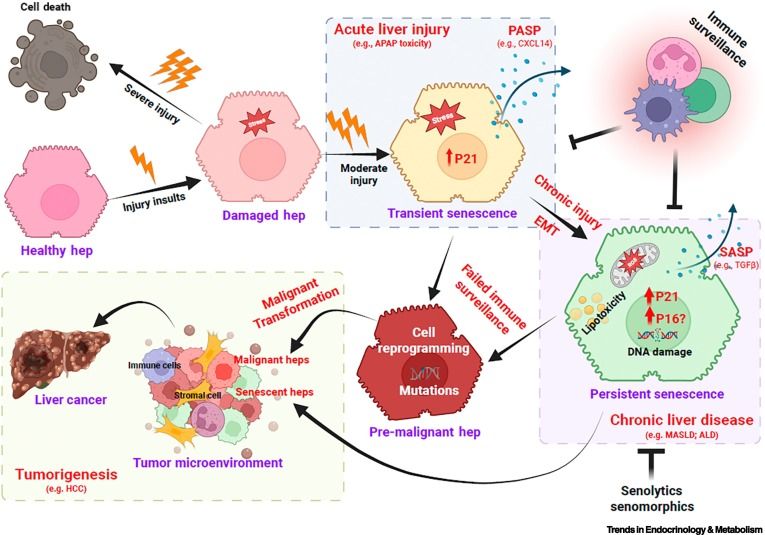
Online Now: Tanycytes: bloodhounds of the metabolic brain #trends #endocrinology #metabolism
01.11.2025 12:23 — 👍 0 🔁 0 💬 0 📌 0@cp-trendsendomet.bsky.social
We publish rigorous and engaging articles spanning from cellular bioenergetics to whole-body physiology. https://www.cell.com/trends/endocrinology-metabolism/home

Online Now: Tanycytes: bloodhounds of the metabolic brain #trends #endocrinology #metabolism
01.11.2025 12:23 — 👍 0 🔁 0 💬 0 📌 0
Online Now: MASLD in childhood as a multisystem health challenge beyond the liver #trends #endocrinology #metabolism
28.10.2025 12:23 — 👍 0 🔁 0 💬 0 📌 0
Online Now: Adrenalectomy is underused: a call to reduce mortality #trends #endocrinology #metabolism
27.10.2025 12:23 — 👍 2 🔁 0 💬 0 📌 0Online Now: In silico prediction of endocrine activity #trends #endocrinology #metabolism
25.10.2025 12:23 — 👍 2 🔁 0 💬 0 📌 0
Online Now: Art breaks obesity’s health information silos #trends #endocrinology #metabolism
22.10.2025 12:24 — 👍 2 🔁 1 💬 0 📌 0
Online Now: Dietary medium-chain triacylglycerols in metabolic regulation #trends #endocrinology #metabolism
20.10.2025 12:24 — 👍 3 🔁 0 💬 0 📌 0
Online Now: Mitophagy in the adaptation to pancreatic β cell stress in diabetes #trends #endocrinology #metabolism
18.10.2025 15:49 — 👍 5 🔁 4 💬 0 📌 1
Online Now: Systemic and metabolic control of liver regeneration #trends #endocrinology #metabolism
18.10.2025 12:23 — 👍 0 🔁 0 💬 0 📌 0You can find the full issue at: www.cell.com/issue/S1043-...
(2/2)

NEW ISSUE! With a focus on the risk and management of type 2 diabetes (T2D) and its complications, from the role of (epi)genetics in gestational diabetes development to the policy changes needed to reshape the future of youth-onset T2D and a global perspective on the prevalence of prediabetes (1/2)
08.10.2025 10:06 — 👍 1 🔁 0 💬 1 📌 0
Online Now: Methionine restriction and mimetics to ameliorate human aging and disease #trends #endocrinology #metabolism
06.10.2025 12:23 — 👍 0 🔁 0 💬 0 📌 0
Online Now: Cold-season programming reinforces the brown fat–cardiometabolic health link #trends #endocrinology #metabolism
27.09.2025 12:23 — 👍 3 🔁 1 💬 0 📌 2
Online Now: Rethinking ‘normal’: are pubertal milestones and growth charts obsolete? #trends #endocrinology #metabolism
26.09.2025 19:10 — 👍 0 🔁 0 💬 0 📌 0Online Now: Mechanisms and therapeutic insights into MASH-associated fibrosis #trends #endocrinology #metabolism
26.09.2025 12:23 — 👍 0 🔁 0 💬 0 📌 0
Online Now: CD8+ T cell stressors converge on shared metabolic–epigenetic networks #trends #endocrinology #metabolism
22.09.2025 19:09 — 👍 0 🔁 0 💬 0 📌 0
Save the date for Multifaceted mitochondria!
Announcing Cell Symposia: Multifaceted Mitochondria, June 21–23, 2026, Glasgow, Scotland, UK
@CellSymposia #CSMito2026 Save the date!
Keynote speakers: Judy Hirst (University of Cambridge) & Jared Rutter (University of Utah)
Find out more: http://dlvr.it/TN9ZsL

Online Now: Hydroxyestradiol alleviates acute kidney injury via blockade of ferroptosis #trends #endocrinology #metabolism
16.09.2025 12:24 — 👍 0 🔁 0 💬 0 📌 0
Online Now: Metabolic hallmarks of type 2 diabetes compromise T cell function #trends #endocrinology #metabolism
12.09.2025 19:09 — 👍 0 🔁 0 💬 0 📌 0
Online Now: Target compartmentalized metabolism to regulate epigenetics #trends #endocrinology #metabolism
11.09.2025 12:23 — 👍 2 🔁 1 💬 0 📌 0
NEW ISSUE! With articles on cancer cachexia, circadian dysruption, lipid metabolism in T cell antitumor activity, brain myelin as an energy source and more!
www.cell.com/issue/S1043-...

Online Now: The interplay between organized lymphoid structures and thermogenic adipose tissue #trends #endocrinology #metabolism
09.09.2025 12:23 — 👍 1 🔁 1 💬 0 📌 0Our Editor @sfabb.bsky.social is on his way to Heidelberg for the EMBO workshop @events.embl.org on developmental metabolism! Get in touch if you'd like to chat about your research and publishing at Cell Press! #EMBODevMet
08.09.2025 16:24 — 👍 1 🔁 1 💬 0 📌 0
Online Now: Contribution of metabolism-independent glucose sensing to metabolic homeostasis #trends #endocrinology #metabolism
07.09.2025 12:23 — 👍 6 🔁 1 💬 0 📌 0
Online Now: Biliverdin reductase-A is a key modulator in insulin signaling and metabolism #trends #endocrinology #metabolism
05.09.2025 12:24 — 👍 2 🔁 1 💬 0 📌 0
Online Now: Decoding microbial volatile signals in host–microbiome crosstalk #trends #endocrinology #metabolism
31.08.2025 12:24 — 👍 0 🔁 0 💬 0 📌 0
Online Now: The dual role of taurine in cancer and immune metabolism #trends #endocrinology #metabolism
30.08.2025 12:24 — 👍 1 🔁 0 💬 0 📌 0
Online Now: Redefining senescence through hepatocyte fate changes in liver diseases #trends #endocrinology #metabolism
29.08.2025 15:49 — 👍 0 🔁 0 💬 0 📌 0